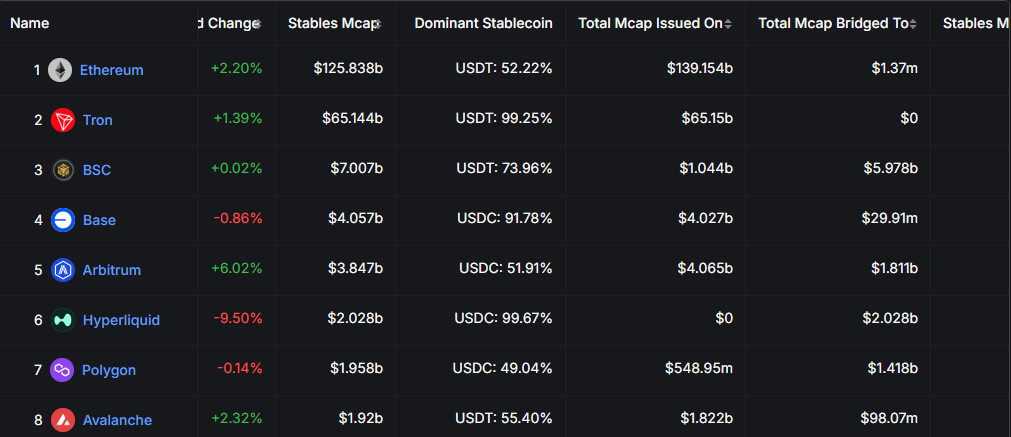-
The stablecoin market is witnessing unprecedented growth, surpassing the $230 billion mark as of early 2024, highlighting its crucial role in digital finance.
-
With a 90% increase in market capitalization since late 2023, investors are strategically positioning themselves to capitalize on this burgeoning market.
-
According to crypto analyst Patrick Scott, “Investing in blockchains where stablecoins are issued offers significant indirect exposure to their growth.”
Discover how to profit from the stablecoin boom with strategic investments in emerging projects and top blockchain networks.
How Retail Investors Can Profit from the Stablecoin Boom
As the stablecoin market flourishes, Patrick Scott, a prominent DeFi expert, highlights three pivotal strategies for investors aiming to leverage this sector’s growth.
“There are 3 ways to play the stablecoin boom: 1) Invest in the blockchains where stablecoins are issued 2) Engage with stablecoin issuers 3) Utilize DeFi protocols that incorporate stablecoins,” Scott elaborates.
Scott emphasizes that the most promising opportunities reside in funding the foundational blockchains that issue stablecoins. Two leading platforms, Ethereum (ETH) and Tron (TRX), have emerged as major players in this landscape.
Ethereum boasts approximately $126 billion in circulating stablecoins, while Tron has amassed about $65 billion, with both networks achieving all-time highs in stablecoin usage.

Foundational blockchains for stablecoins. Source: DefiLlama
Tron’s consistent growth is primarily attributed to its popularity in peer-to-peer (P2P) transactions, especially in developing regions, presenting a compelling case for investors looking to gain exposure to the expanding stablecoin market.
“…within a few years it will be obvious in hindsight that the best way to invest in the coming stablecoin boom was simply just to buy ETH where the most stablecoins are and will be settled,” analyst DCinvestor remarked, suggesting that Ethereum may emerge as the key beneficiary of stablecoin-related economic activity.
While leading stablecoin issuers like Tether and Circle remain privately held and inaccessible for direct investment, emerging projects like Ethena (USDe), USDY (Ondo), HONEY (Berachain), and crvUSD (Curve) offer valuable alternatives for investors. These projects often include governance or utility tokens, allowing participants to share in their growth and success.
Such tokens can provide unique benefits—like voting rights or revenue-sharing opportunities—that empower retail investors to profit alongside the stablecoin sector’s expansion.
Growing Allure of Stablecoins in DeFi
Stablecoins are integral to the DeFi ecosystem, facilitating liquidity, lending, and yield generation. Major DeFi platforms, such as Aave, Morpho, Fluid, Pendle, and Curve, heavily incorporate stablecoins into their frameworks.
Investors can engage with these platforms, provide liquidity, or enter lending and borrowing arrangements to capitalize on attractive returns derived from interest rates and transaction fees.
The increasing adoption of stablecoins has attracted the attention of institutional players, including Bank of America and Fidelity Investments, both of which are expanding their digital asset offerings, signaling a burgeoning interest among traditional finance entities.
State-backed initiatives like Wyoming’s WYST stablecoin, and newly introduced USD1 by World Liberty Financial—linked to the Trump family—further demonstrate the widespread adoption and acceptance of stablecoins in various sectors.
Despite the optimism, concerns about potential risks linger. Similar to the 2008 financial crisis, a rush to redeem stablecoins during market instability could compel issuers to liquidate reserve assets, potentially leading to broader financial disruptions.
In response, regulatory initiatives like the GENIUS and STABLE Acts aim to implement tighter scrutiny of stablecoin issuers, ensuring they maintain fully backed reserves to protect the financial system’s integrity.
Conclusion
In summary, the stablecoin market presents a wealth of opportunities for retail investors willing to engage with foundational blockchains and innovative projects. By understanding the dynamics of stablecoins in both traditional and decentralized finance, investors can position themselves advantageously in a rapidly evolving landscape. Strategic investment in this sector can lead to promising outcomes as the stablecoin ecosystem continues to expand.
